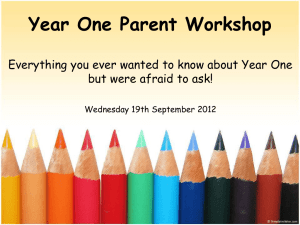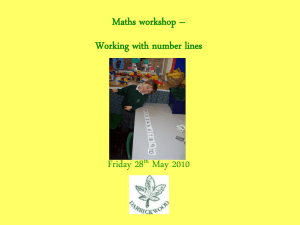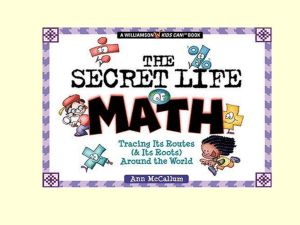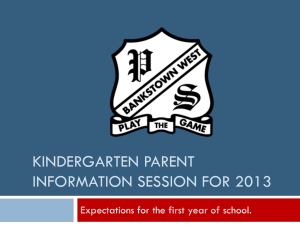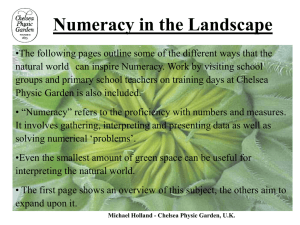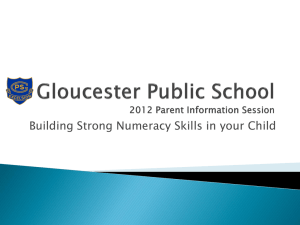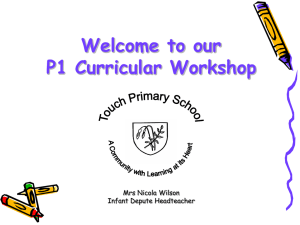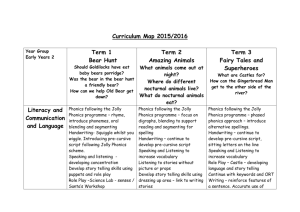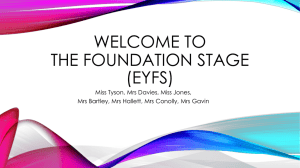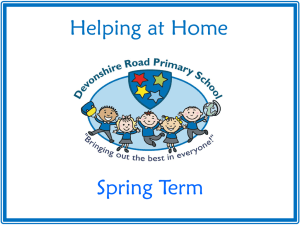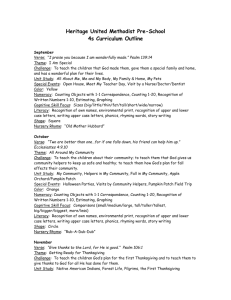New Parents Powerpoint Presentation - St Joseph`s School
advertisement
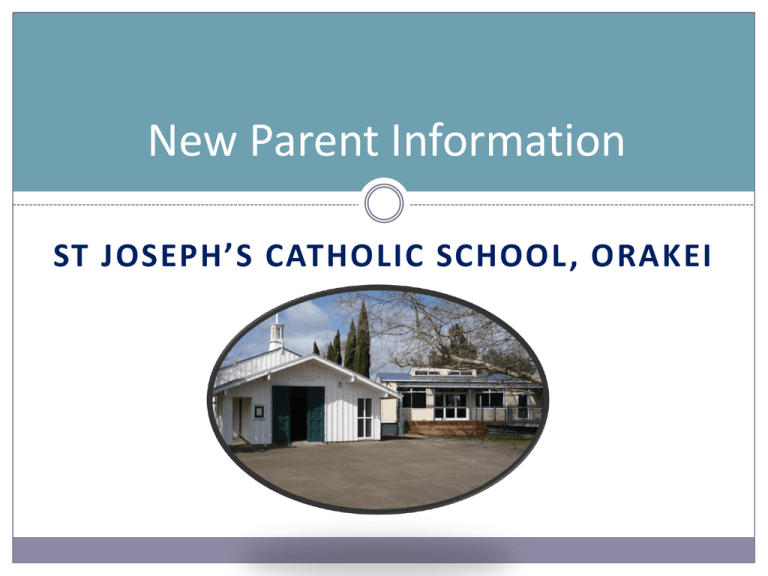
New Parent Information ST JOSEPH’S CATHOLIC SCHOOL , ORAKEI The History of St. Joseph’s School, Orakei Brigidine Sisters were the founding sisters of St. Joseph’s School from February 1958 – December 1971. (13 years). “As Brigidines, we stand in reverence for the community of life and we will continue to work to further compassion and justice. For humanity and the earth.” Josephite Sisters were the second group of Sisters to run the school. During these years lay teachers also began working in Catholic Schools. “As Josephites we value the dignity of each person, particularly the poor, act with simplicity and love, and have complete trust in God.” The Marist Sisters moved here in May 1984 (literally) and have resided here ever since. They have always had a strong connection with the school. Our school celebrated its 50th Jubilee in 2008 What makes a Catholic School different? The School’s Special Character Religious Education Gospel Values Liturgies Prayer / Karakia Brigidine Charism Staff Professional Development Staff professional development is integral to improved outcomes for our children. Full Staff PD this year: Numeracy Literacy – writing focus Visual Arts – painting and drawing National Standards The Teaching of Literacy Oral Language Phonics / Spelling Reading Writing Oral Language The main skills we focus on during the children’s first year at school are: Using the correct/appropriate volume Using eye contact Asking appropriate and specific questions (demonstrates a good listener) Sitting/standing still when both speaking and listening Phonics (letter sounds) Phonics are the building blocks for Reading and Writing Children begin by identifying the initial phoneme in a word, then they can identify the final sound, then they begin to fill in the middle sounds. How can I help my child with their phonics? Ask your child to point out phonemes in their reading books or in signs, posters, newspapers, etc. Don’t teach the upper case Play I Spy Help them choose something for the Letter of the Week display Reading Reading begins by memorising the language patterns Children will begin to use the initial letter/phoneme to work out the unfamiliar words Children will begin to recognise some of the basic words that reoccur Using a combination of their knowledge of basic words and their phonic knowledge they will begin to read. How can I help my child with their Reading? Discuss the front cover. Predict – what could it be about? Relate the events to personal experience wherever possible Look closely at the pictures – facial expressions, unfamiliar objects Match their finger to the words as they read them. It doesn’t matter if they are reading from memory or just know the pattern. Ask you child to point out the letter sounds..sssss…. ttttt and later basic words such as I, am, went, etc. Ask them questions at the end – can they tell you what happened? Give them lots of praise and encouragement. Writing We try to give the children as many different reasons to write as possible. Weekend news School trip Our family Our friends Letters Lists Recipes Instructions Myths & legends Fairytales The Writing Process Say it out loud. Does it make sense? Teacher writes it. Child copies over the top. Child reads it aloud. Teacher writes it. Child copies underneath. Child reads it aloud. Encourage children to take risks. Can they use their phonic knowledge to write down the first sound of each word? Write down the first and final sound in each word. Write down the first, final and middle sounds in each word. Example 1 One of my teeth is sore and it is wiggling a little bit. When it is wriggling much my teacher will pull it out. Example 2 I want to fight a crocodile and I do because I will get a girlfriend. How can I help my child with their Writing? Let your child write whenever possible. Ask them to write out the shopping list Write letters/notes to each other Lots of phonics work Numeracy The Numeracy Project represents a significant change in the way mathematics is taught in New Zealand schools. Focuses on: Developing children's understanding of numbers – knowledge Developing their ability to use numbers to solve problems – strategy Children may solve number problems by counting, adding, subtracting, multiplying, dividing, or combinations of these. The Numeracy Stages Stage 0 Emergent – the child has no reliable strategy to count a number of objects Stage 1 One to One Counting – can reliably count a number of objects Stage 2 Counting from One on Materials – solves + problems by counting from 1 Stage 3 Counting from One by Imaging – can solve + problems without the use of materials (in their head) Stage 4 Advanced Counting – counts on or counts back to solve + and – problems; skip counting to solve multiplication tasks Stage 5 Early Additive Part-Whole - limited range of mental strategies to estimate answers and solve + or – problems; uses a combination of known x facts and repeated addition; uses known x and repeated + facts to anticipate the result of division Stage 6 Advanced Additive - estimate answers and solve + and – tasks involving whole numbers mentally by choosing appropriately from a broad range of advanced mental strategies; uses a combination of known facts and mental strategies to derive answers to x / ÷ problems Stage 7 Advanced Multiplicative - chooses appropriately from a broad range of mental strategies to estimate answers and solve + / -, and x / ÷ problems involving decimals, integers and related fractions. The student can also use multiplication and division to solve addition and subtraction problems with whole numbers. How can I help my child with their Maths? Do lots of counting, especially objects Add groups of objects together Visit the NZ maths website www.nzmaths.co.nz and click on ‘Families’ Bring Maths into your everyday life – shopping, tidying up What activities can my child get involved in? Soccer Rugby Folk Dancing Camp Netball Gymnastics Chess Club Swimming Softball Basketball Speech Competitions Sailing School trips Cross Country Music Lessons Getting Ready for School What should my child be able to do when they start school? There is no set thing that your child should know or be able to do when they begin school. Here are a few things to be working towards: Read and write the numerals to 10 Count to 10 and backwards from 10 Count out 10 objects The letters of the alphabet (lower case) and the sound each letter makes Write their own name – capital first letter, then lower case, e.g. Rebecca Getting Ready for School What can I do to help the transition go smoothly? Come for a pre-school visit Let your child look at their lunch with you Teach your child how to pack their bag Promote the “It’s okay to ask” attitude Name everything, including shoes!! Provide us with as much information as possible Be at school on time or early When the bell goes kiss them and leave Please no lace ups until your child can tie them Keep us informed Sunhats and Water Communication Helping your child settle in and make friends Class Buddy Senior Buddy Regular feedback from the teacher Teacher observations Welcomed to the school at assembly Thank You For Choosing St Joseph’s

